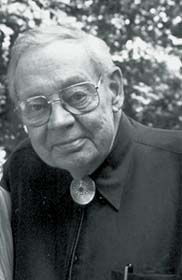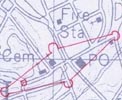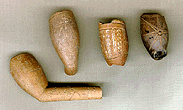The first gravestone paper was published in 1967, the year that I met Jim Deetz for the first time, when he lectured on this subject to the introductory cultural anthropology course I was taking at Brown. Another of my teachers, Doug Anderson, had brought Deetz to my attention a year before, when the deal to bring him from Santa Barbara to Brown had been negotiated. I had never heard of James Deetz and, always having been a literal learner, I immediately wanted to know if he was mentioned in our textbook, the first volume of Gordon Willey's (1966) An Introduction to American Archaeology. Deetz was nowhere to be found in the text or bibliography. As a first-semester sophomore just deciding to major in anthropology, I had yet to understand the reasons for Doug Anderson's excitement. Deetz's arrival the next academic year as a professor in Brown's then department of Sociology and Anthropology quickly changed all that, marking the beginning of an important new chapter in his career, and a significant one for the development of the field.
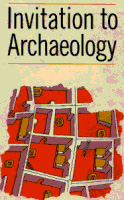
The next fall, Deetz offered the introductory course in human prehistory for the first time at Brown, a course that would become one of the largest and most popular lecture courses offered at the school in that period. We used his newly-published introductory text, Invitation to Archaeology, one of the most innovative books of its kind ever published. In addition to using materials from the various projects he had been working on since 1958 to explain and illustrate basic concepts and techniques in archaeology, Jim developed an explicit linguistic model for artifact manufacture and use that formalized his thinking about what he termed "the mental template." In this chapter, written in 1966, Deetz anticipated his adoption of a more explicit structuralist approach to material culture in the early 1970s. These ideas began to crystallize as he developed a new course, American Material Culture, which he first offered in the fall of 1971, but his pursuit of this approach had received a major boost two years before when he was introduced to Henry Glassie, a folklorist who had himself just turned to structuralism as a model for understanding folk material culture.

It is fair to say that the friendship and collaboration between Deetz and Glassie was one of the major influences on the development of material culture theory during this period. Their ideas had a substantial impact on archaeological theory in general, on historical archaeology, and on the research of a range of scholars engaged in the new specialty of material culture studies. Although Deetz introduced some explicitly structuralist ideas such as "the Georgian mindset" in his 1972 analysis of ceramics and foodways in the area of Plymouth Colony, his book, In Small Things Forgotten: The Archaeology of Early American Life, published in 1977, is a culmination of his thinking and teaching during the early 1970s. It fully develops his structuralist interpretation of American material culture, which as he acknowledges owes much to the work of Glassie.
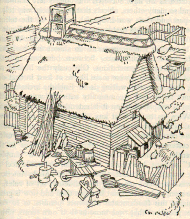
The same year that In Small Things Forgotten was published, Deetz left Brown and spent a year teaching at the College of William and Mary. He never returned to his teaching position at Brown, but spent the summer of 1978 putting his affairs in order at Plimoth Plantation. In late August of that year, he and his family returned to California, where Jim joined the faculty in the Department of Anthropology at the University of California at Berkeley. This move brought to a close a very productive decade at Plimoth Plantation, where Deetz had made so many fundamental changes in the way that the lives of the Pilgrims were interpreted to the public. As Assistant Director between 1967 and 1978, Deetz had transformed Plimoth Plantation from a mannequin-furnished commemoration of the Mayflower passengers to a vibrant living history museum replete with accurately-costumed character interpreters engaged in the nitty-gritty of daily life. What is more, he extended this approach to the interpretation of the local Native Americans, the Wampanoags, with their blessing and assistance. Very soon after it was developed, the Indian village at Plimoth Plantation was staffed and administered by local Native Americans, one of the first such programs of its kind in the United States.
When he departed for California, Deetz also left behind the fledgling Parting Ways Museum of African American Ethnohistory, an organization devoted to interpreting a small settlement of former slaves, freed after their service in the Revolutionary War and granted nearly one hundred acres of land on the outskirts of Plymouth. Excavations of this community began in the summer of 1975, with a crew made up of local African-American kids who were discovering their heritage with support from a bicentennial grant administered by the town. Although the museum never materialized, this project did much to advance the cause of African-American archaeology as an important area of research within historical archaeology, research that in this case was pursued expressly for the purpose of engaging the local minority community in the interpretation of its own past. Now such programs are commonplace, but Jim Deetz began promoting these efforts more than 25 years ago, long before "social responsibility" and "public outreach" became widely shared imperatives among the archaeological profession.
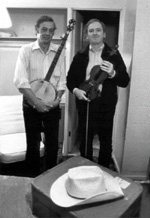
In leaving New England, Deetz also ended an important chapter for many of us who had been his graduate students at Brown. Although he would remain our advisor and mentor, the program in historical archaeology at Brown would never be the same. But he very quickly attracted a number of new Ph.D. students, including several recruited from the undergraduate program in anthropology at Cal, and others who followed him west. He began to train this new crop of students primarily through research at Flowerdew Hundred farm in Prince George County, Virginia, a property with which he had become acquainted during his year as a visiting professor at William and Mary. He also turned in earnest to projects that took advantage of the interface between historical archaeology and folklife studies. Closest to Berkeley was his multiyear project at the abandoned coal-mining town of Somersville, California. Somewhat further away, Jim worked with a team from the American Folklife Center to document traditional lifeways in Paradise Valley, Nevada. Twenty years after his first job in the University of California system, Jim Deetz was once again dividing his research time between the two coasts.
Soon, however, he went international, expanding his active research territory to include South Africa, which he first visited in 1984. For the remainder of the 1980s, Deetz brought graduate and undergraduate students from Berkeley to the Eastern Cape, where they worked on a number of research projects in cooperation with various South African colleagues. During this same period, he kept his summer program at Flowerdew Hundred active as well, running a series of very popular summer institutes for college teachers and a Cal field school. A number of Ph.D. dissertations have been produced from this work, and Deetz himself produced a published synthesis of his work at Flowerdew in 1993. This book, like others he has done, brought together many of the ideas he had been developing through his teaching and other writing in the prior decade.
